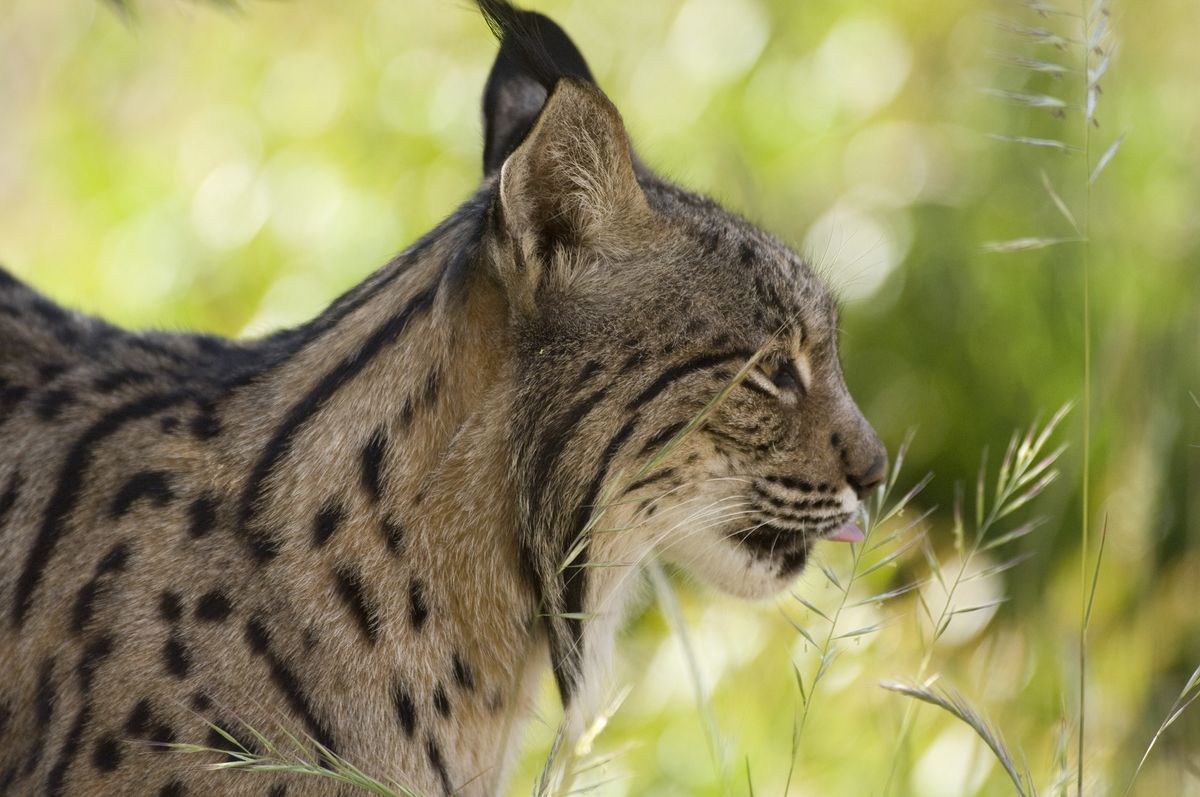
Climate change could ensure the wipe out of the Iberian Lynx, considered the world's most endangered cat, new research from Spain suggests.
Currently, about 300 of these adorable, pointy-eared, shaggy-bearded cats live in Spain and Portugal, dining mostly on rabbits. But according to a study publishing today (July 21) in the journal Nature Climate Change, warming temperatures and an increasingly dry local climate could kill off their staple food, making their extinction certain.
Reintroducing the animals farther north could spare the population and even help it rebound, said study co-author Miguel Bustos Araújo, a biogeographer at the National Museum of Natural Sciences, in Madrid.
"If you do what you're currently doing, you'd end up with an extinct animal in the wild by the end of the century," Araújo said. "If you take climate change into account, the population increases from 300 to 800 by the end of the century."
One-ingredient diet
The Iberian lynx, a predator about four times the size of the average housecat, once roamed throughout Spain and Portugal. But because 90 percent of the lynx's diet comes from rabbits, two diseases that decimated rabbit populations in the 20th century also took their toll on the lynx. Poaching and habitat loss also contributed to the lynx population's plummet.
Now, the lynx is the world's most endangered cat and its range is confined to two small regions of Andalusia in southwestern Spain. Conservation programs have spent nearly $123 million trying to reintroduce the cats into native habitats in the southern Iberian Peninsula. [Images: Endangered Species of the Red List]
Sign up for the Live Science daily newsletter now
Get the world’s most fascinating discoveries delivered straight to your inbox.
Climate stress
But Araújo and his colleagues aren't convinced that those programs could work.
The researchers used climate change models to predict how the rabbit population could fare, and then integrated that with population models relating the Iberian lynx population to its main prey.
In its current enclaves, hotter temperatures and less rainfall are predicted to reduce the amount of herbs available for rabbits to eat, Araújo said. That would reduce the rabbit population, which would drive down the lynx population down as well. By the end of the century, the lynx could be extinct, the researchers said.
But there is a bright spot: By shifting reintroduction programs further north, the endangered species could not only survive climate change, but rebound, the researchers found.
This suggests that that conservation programs in general should account for climate change, Araújo said.
"One the one hand, conservation is demanding changes in the whole economy, less carbon emissions," Araújo said. "But when they have a program, they usually forget about climate change."
Follow Tia Ghose on Twitterand Google+. Follow LiveScience @livescience, Facebook & Google+. Original article on LiveScience.com .

Tia is the managing editor and was previously a senior writer for Live Science. Her work has appeared in Scientific American, Wired.com and other outlets. She holds a master's degree in bioengineering from the University of Washington, a graduate certificate in science writing from UC Santa Cruz and a bachelor's degree in mechanical engineering from the University of Texas at Austin. Tia was part of a team at the Milwaukee Journal Sentinel that published the Empty Cradles series on preterm births, which won multiple awards, including the 2012 Casey Medal for Meritorious Journalism.